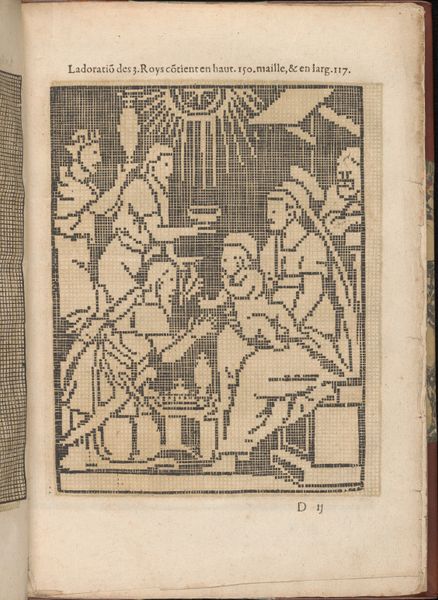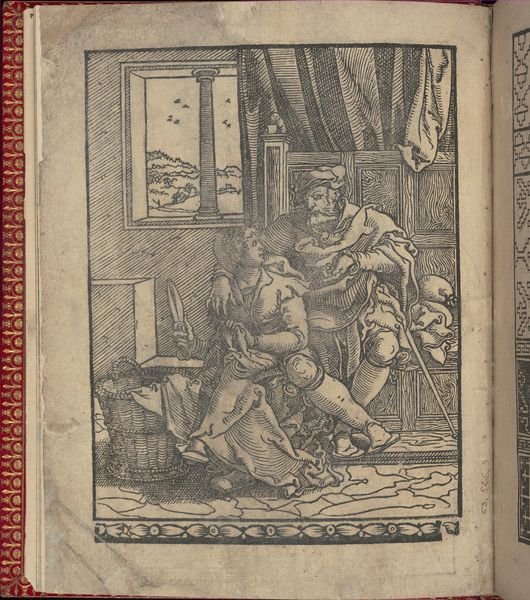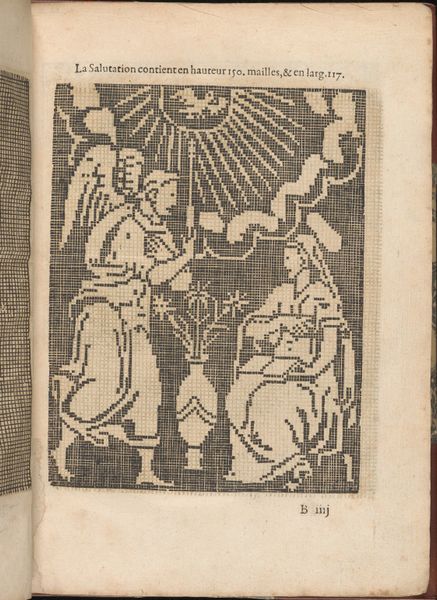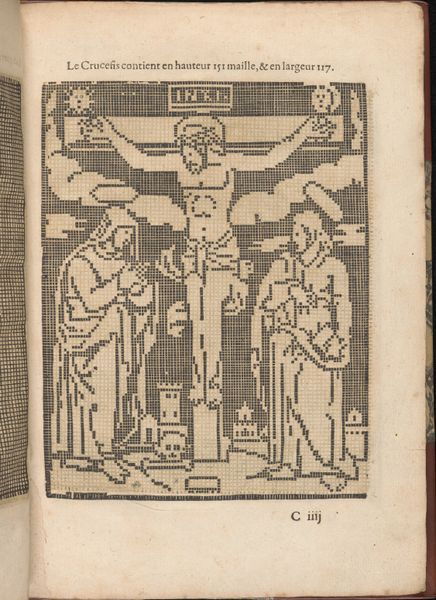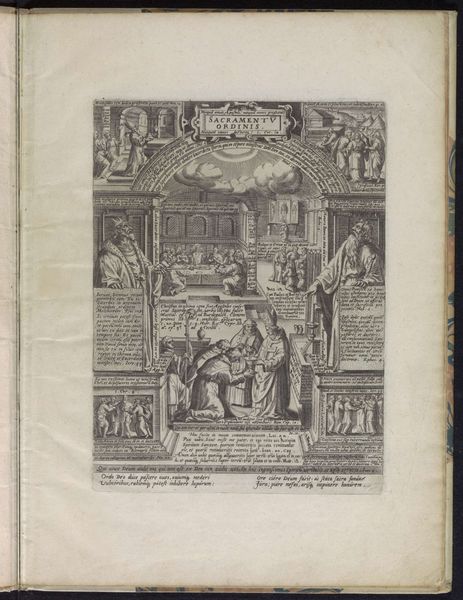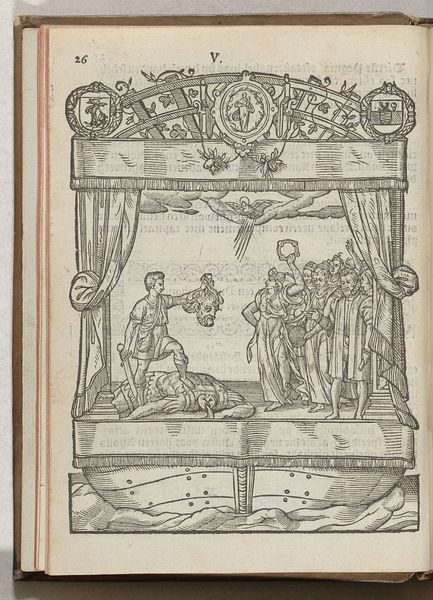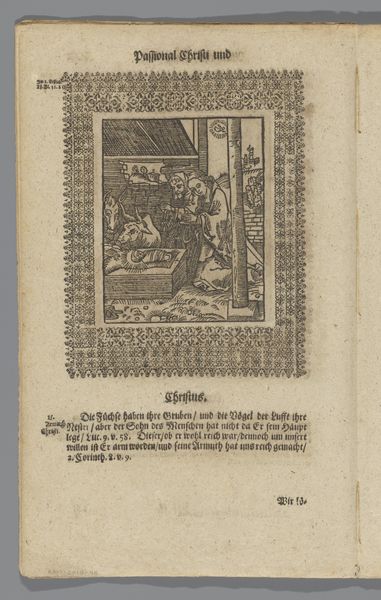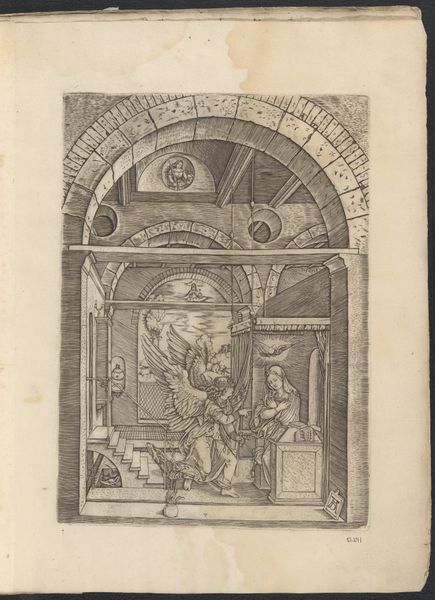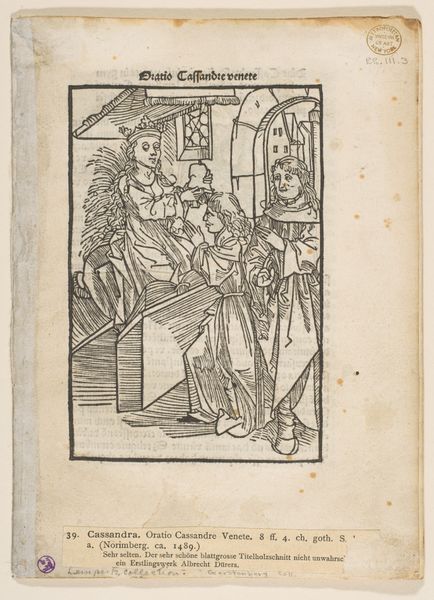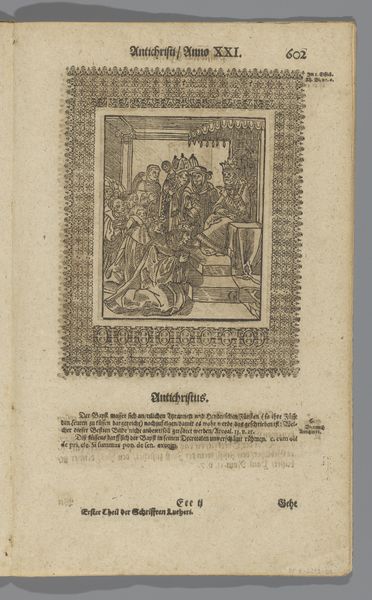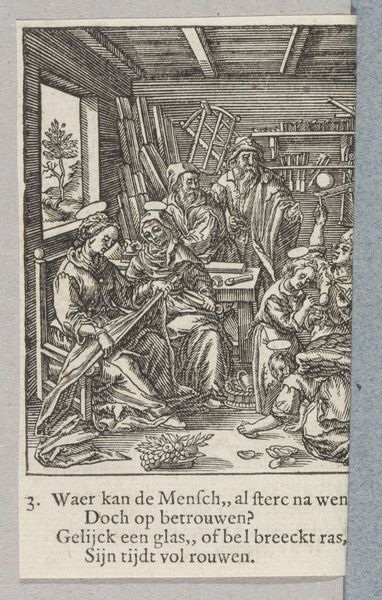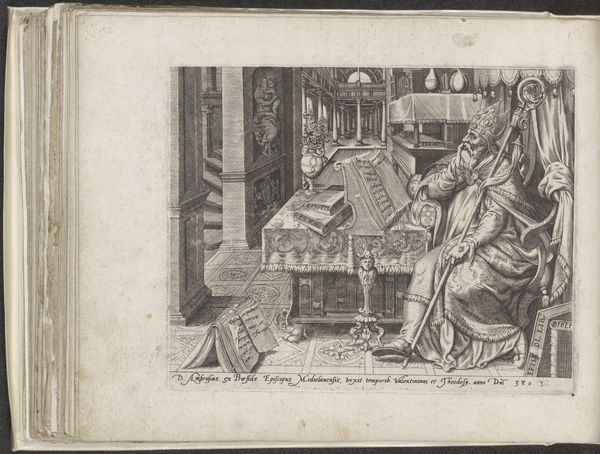
Les Secondes Oeuvres, et Subtiles Inventions De Lingerie du Seigneur Federic de Vinciolo Venitien, page 13 (recto) 1603
0:00
0:00
drawing, graphic-art, print, engraving
#
drawing
#
graphic-art
#
narrative-art
# print
#
figuration
#
11_renaissance
#
history-painting
#
engraving
Dimensions: Overall: 9 7/16 x 6 1/2 in. (24 x 16.5 cm)
Copyright: Public Domain
Editor: This engraving from 1603, "Les Secondes Oeuvres… page 13," by Federico de Vinciolo, presents the Nativity in such an unexpected way! The whole scene is constructed out of these tiny little blocks, making it seem like a textile pattern. What draws your eye to this piece? Curator: Immediately, I’m struck by the materiality itself. This isn't just an image; it’s a set of instructions, a template for *making* something. We're seeing not just a depiction of the Nativity, but the potential for its reproduction in needlework. How does this reframing – the labor involved – impact your perception of the holy scene? Editor: I guess I hadn’t considered the labor involved. Seeing it as a set of instructions highlights the craft and skill required to recreate the image, almost like a collaboration across time between Vinciolo and the embroiderer. Does that cheapen it though, to see this divine scene turned into a commodity almost? Curator: On the contrary. The image explicitly joins devotional art to the domestic sphere through the production of what was perhaps commercial luxury textiles. Note that inscription, those were not only technical specification for sizing but an inscription onto an industrial and material form, which allows us to situate the labor in question, as part of the process of manufacturing status. Look, it seems clear: What could be a more intimate offering than something handmade? Think about the social context – who was producing these embroideries? Where were they displayed, worn? Editor: So, you are saying it elevates this Renaissance work by bridging craft and art, rather than cheapening the art due to material processes. It makes me consider women as artists more fully integrated into the Renaissance art sphere. Curator: Precisely! The very act of creating from this template is an act of participation, imbuing the material with further meaning. The circulation and consumption become critical extensions of the artistic intent. Editor: It is quite amazing to think about all these connections – from design to creation and distribution. Thanks; it does challenge the usual high art narrative. Curator: Absolutely. The object, the act of making and the consumption all point to how art actively intersects with, and is constituted by, socio-economic conditions.
Comments
No comments
Be the first to comment and join the conversation on the ultimate creative platform.
